Sony Cyber-shot DSC-H1 Review
Sony Cyber-shot DSC-H1
SLR-style functionality, 12x optical zoom and a killer price - the Sony DSC-H1 has a lot going for it.
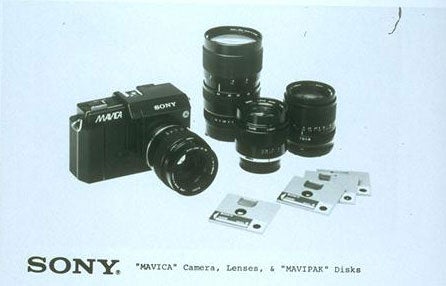
Verdict
Key Specifications
- Review Price: £312.00
Sony invented the digital camera. OK, I’ll admit that’s a fairly contentious statement, but the Sony Mavica, launched back in the dark ages of 1981, was the world’s first consumer filmless electronic camera. It was based on video camera technology and used floppy disks for storage, but it was the direct ancestor of all the digital cameras we have today.
—-
Original 1981 Sony Mavica
—-
Sony has built on this heritage, and today is the worldwide market leader, selling more digital cameras than any other manufacturer. So that being the case, why did it take so long for Sony to launch an SLR-style semi-pro camera? Most of the other manufacturers have been making them for years.
The DSC-H1 was announced back in February last year, but it didn’t arrive in the UK until the end of summer and still hasn’t made a big impact on the market. This is surprising, because with a list price of £399.99 it offers a powerful specification and excellent picture quality for a very reasonable price. With a bit of shopping around online you can pick one up for around £260, little more than the price of a decent compact camera, which makes it a major bargain.
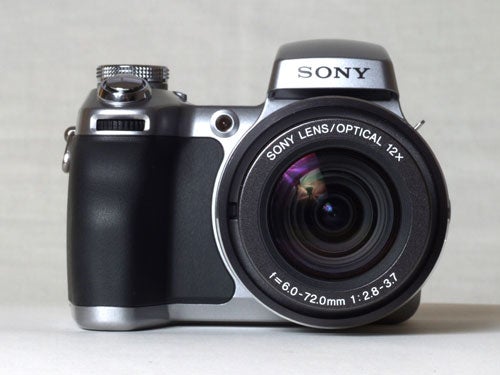
This may be Sony’s first SLR-style camera, but it is a very accomplished debut. It is quite large compared to its direct competitors, but it has a comfortable ergonomic design reminiscent of the Fuji S20 Pro or Nikon 8800. The body is strong polycarbonate plastic over a metal chassis, but the lens barrel is all metal. It has a large comfortable rubberized handgrip with a sculpted thumb rest on the back. The controls are sensibly laid out and easy to operate, and the big 2.5in 115KP LCD monitor is bright and clear, although rather vulnerable to scratches and finger marks.
However the most eye-catching feature, and the camera’s main selling point, is its huge 12x optical zoom lens, equivalent to a whopping 36-432mm on a 35mm camera. Like many recent super-zoom cameras, it also features optical image stabilization, essential when using a lens of this size.
Sony has a business partnership with the esteemed German lens design company Carl Zeiss, and many of Sony’s cameras bear this distinguished brand name. It is notable by its absence from the lens on the H1, but I wouldn’t be surprised to learn that Carl Zeiss had a hand in its design, because it’s quite a piece of work. It can focus down to 2cm, it has a maximum aperture of F2.8-3.7, which is remarkably fast for such a big zoom, and as we’ll see later it has amazingly good optical performance, far better than most of its competitors.
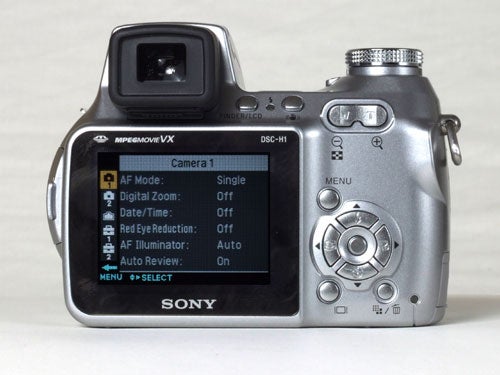
Despite this monster of a lens, the H1 doesn’t hang about when it comes to performance. It starts up in a very creditable two seconds, and in good light it has a very quick autofocus time, taking around 0.3 seconds to lock on. Low light slows this down somewhat, but thanks to a very good AF illuminator the H1 can focus in complete darkness at a range of a couple of metres. Some reviewers have reported that the autofocus system has problems locking on at maximum zoom range, but I found no such problem.
In continuous shooting mode the H1 can take 13 frames in just under 11 seconds, before it has to pause for 11 seconds to empty the image buffer into the memory card. On the subject of memory cards, the H1 naturally takes Sony Memory Stick. I tested the camera with a standard 128MB purple Memory Stick because that’s all I have at the moment, but it is designed to use the faster and higher capacity Memory Stick Pro, so write times may well be faster with these newer cards.
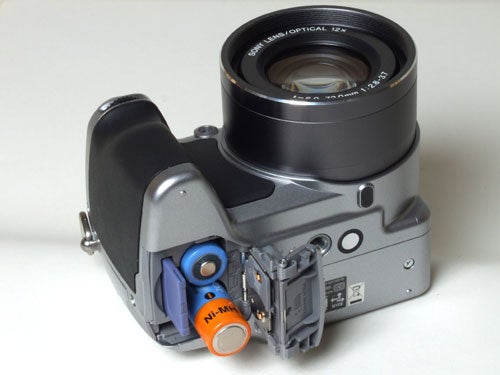
The H1 is not short of creative features. It offers the full range of manual exposure modes, with manual shutter speeds of 30 seconds to 1/1000th of a second, and apertures from F2.8 to F8.0 available. These settings don’t compete with an SLR, but they’re quite respectable for a semi-pro camera. For the more lazy photographer there are seven scene program modes, as well as a full-auto ‘idiot mode’. Actually, this is a particularly good camera for the attention-challenged. If you switch the camera on with the lens cap in place, rather than trying to extend the lens anyway it flashes up a message on the screen, “Lens cap attached”; the “…you idiot.” is unspoken but implied.
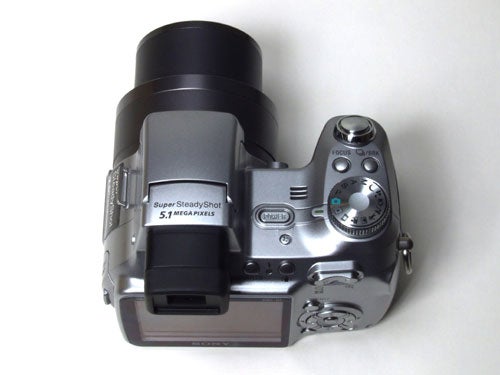
Other options include manually adjustable contrast, sharpness and saturation, auto bracketing, spot metering, movable focus point and adjustable flash level. One option that is missing is a RAW or TIFF mode, surprising considering the rest of the specification.
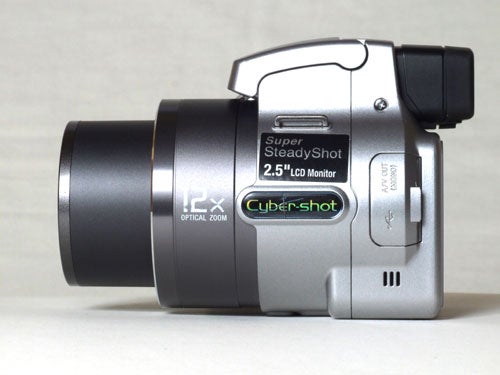
I’ve not been able to find out much information about Sony’s proprietary Super SteadyShot anti-shake technology, apart from the fact that it’s an optical system that works by moving an element in the lens system. However it works it seems to be quite effective. It is set to ‘on’ as default, and allows shake-free hand-held shooting down to about 1/100th of a second at full zoom, and 1/15th at wide angle. This is quite respectable, and compare well with other technically advanced systems such as Konica Minolta’s moving sensor system. It doesn’t mean you can leave the tripod at home, but does allow a bit more versatility.
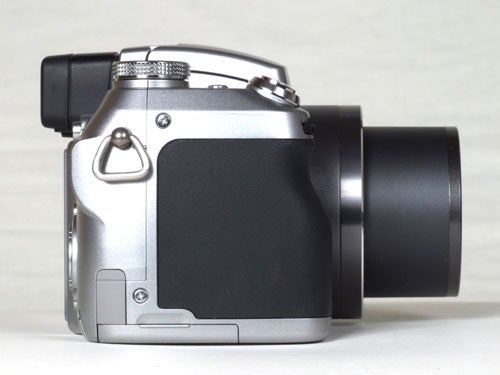
So handling, performance and specification are up to scratch; what about picture quality? A day out on Dartmoor provided some excellent shots, the H1 coping well with the harsh low-angle lighting at this time of year. Colour rendition and exposure were accurate, and the superb lens provides edge-to-edge sharpness. There was some evidence of over-sharpening on the default setting, but turning it down a notch improved this. Image noise was visible on some shots, but wasn’t really a problem below 200 ISO. My only real complaint was some fairly major purple fringing on a couple of shots, but only on extremely high contrast edges shooting into the light. All in all and excellent performance.
”’Verdict”’
Sony’s first SLR-style super-zoom camera is a real winner, and a bargain at the price. Excellent handling, a good list of features and superior picture quality, combined with a 12x image-stabilised lens make this a good all-rounder and a superb enthusiasts camera.
(table:features)
A range of test shots are shown over the next few pages. Here, the full size image has been reduced for bandwidth purposes, and a crop taken from the original full resolution image has been placed below it in order for you to gain an appreciation of the overall quality. The following pages consist of resized images so that you can evaluate the overall exposure. For those with a dial-up connection, please be patient while the pages download.
—-
Note: These ISO evaluation shots were taken indoors using diffused natural daylight. Shutter speeds range from 0.25 sec to 1.0 sec at F3.2.
—-

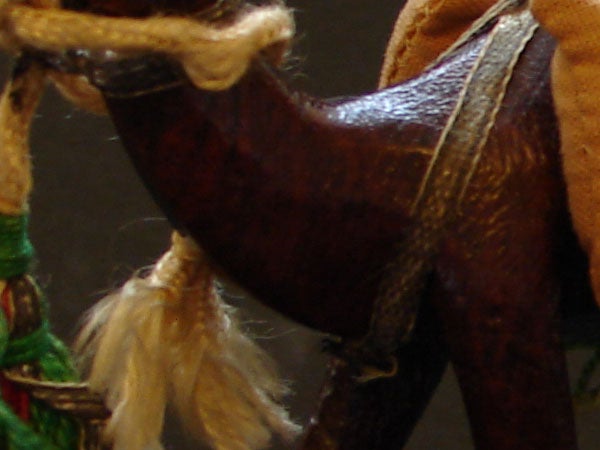
At the minimum setting of 64 ISO the image is nice and sharp, although there is some mottling on the dark background.
—-
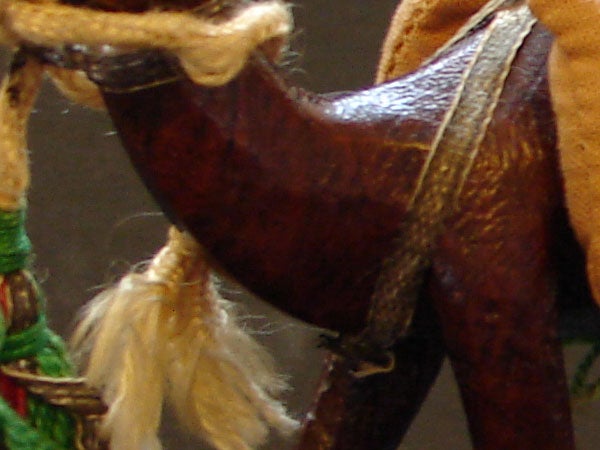
At 100 ISO there are speckled patches of colour distortion visible in the darker areas, and the noise reduction has produced a few artifacts.
—-
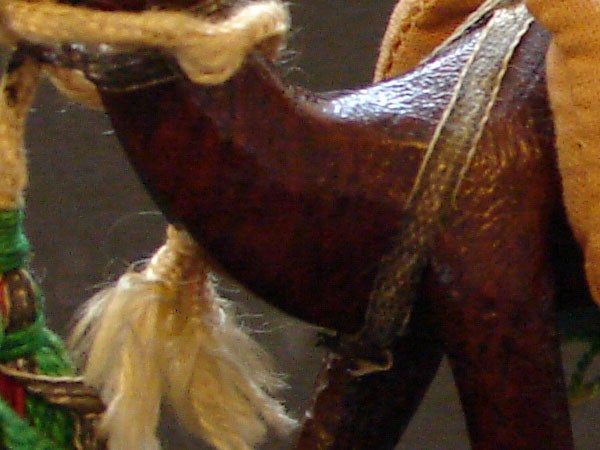
At 200 ISO there is some image noise visible, and the colour mottling in the darker areas is more pronounced.
—-
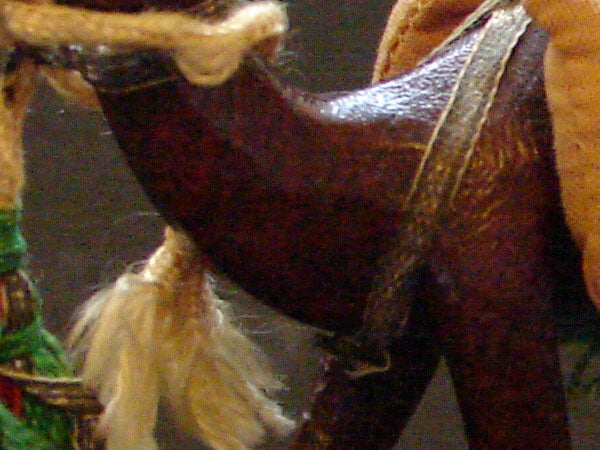
At 400 ISO there is a lot of image noise all over the image. It would be best to avoid this setting.
—-
This page consists of resized images so that you can evaluate the overall exposure.
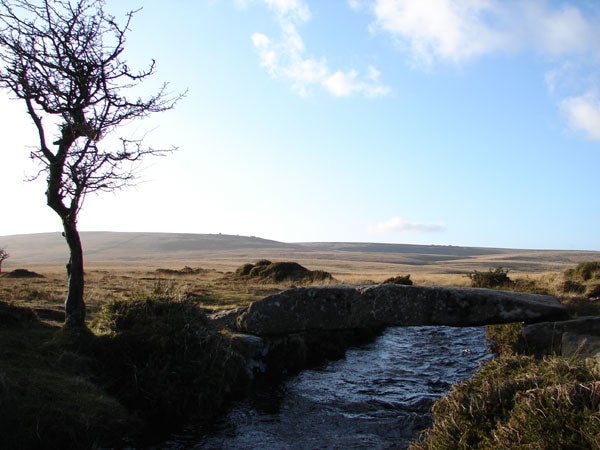
Shooting into the low-angled sunlight has overloaded the CCD on the left of the image, causing severe purple fringing around the tree branches.
—-

This shot was taken in my cellar in total darkness, at a range of about 2 metres. The AF illuminator has worked well, but there is some flash fall-off toward the edges of the frame.
—-
This page consists of resized images so that you can evaluate the overall exposure.

Here, colours are rich, detail is sharp and there is very little processing.
—-
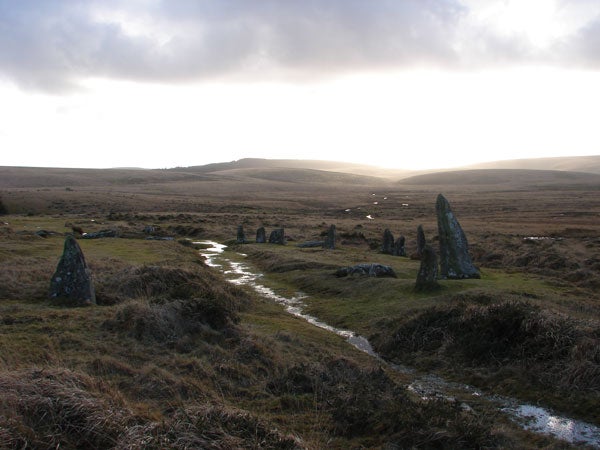
The H1 has coped well with this difficult shot into the low-angled sunlight. Although the highlights are burned out, the foreground is well exposed.
—-
This page consists of resized images so that you can evaluate the overall exposure.

In ideal lighting conditions the H1 has produced a near-perfect result. This is Scorhill Circle, near Gidleigh on Dartmoor.
—-

The H1 has a macro range of 2cm, which is about the range of this shot.
—-
This page consists of resized images so that you can evaluate the overall exposure.

The massive 12x zoom lens is capable of picking out details with perfect clarity at enormous distance. This is Scorhill Tor at about half a mile.
—-
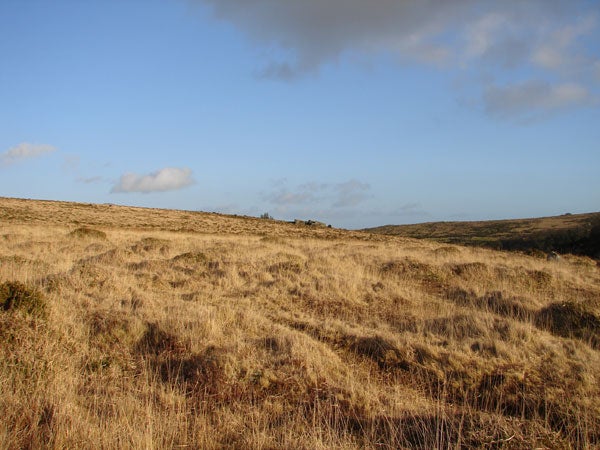
Taken from the same position as the previous shot but at wide angle, you can barely see the tor which was filling the frame at full zoom.
—-
Trusted Score
Score in detail
-
Value 9
-
Image Quality 8
Features
| Camera type | Super Zoom |
| Megapixels (Megapixel) | 5.2 Megapixel |
| Optical Zoom (Times) | 12x |

